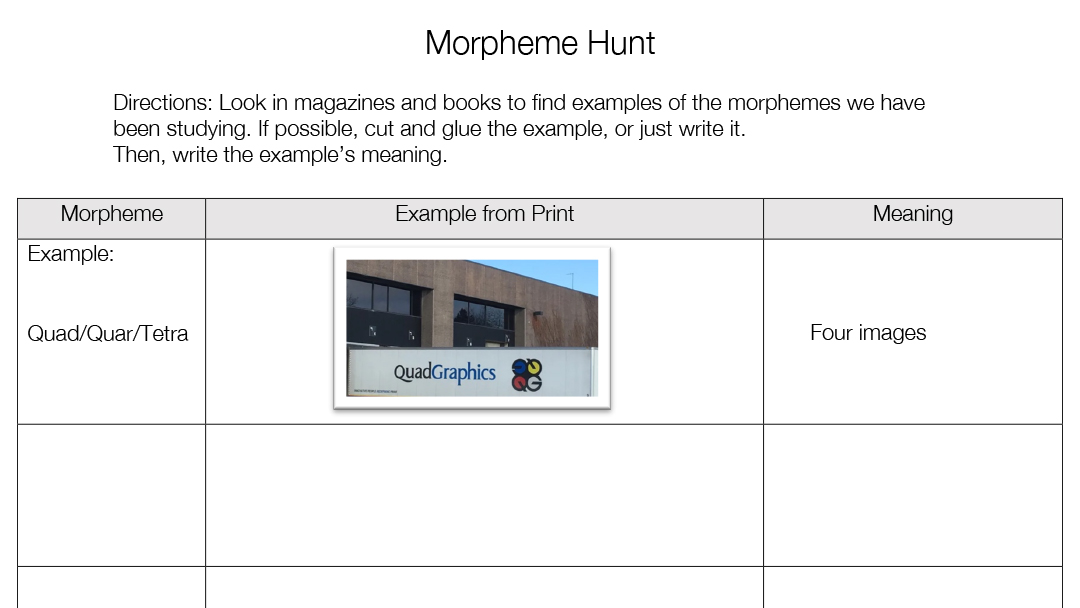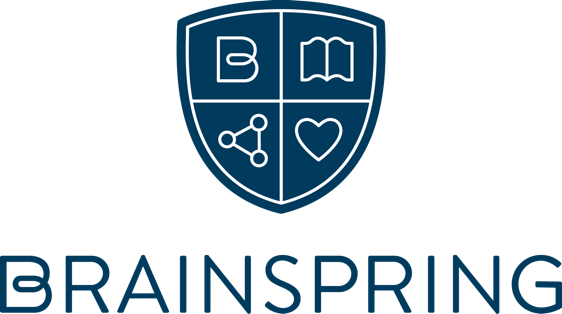Multisensory Morpheme Hunt Activity
Posted by Brainspring on 28th Jun 2021
Morphemes are the smallest units of meaning in a language. They are the building blocks of words and play a crucial role in the structure and formation of words. Understanding morphemes is essential for anyone who is learning the English language. There are two main types of morphemes: free morphemes, which can stand alone as words (“book”, “run”), and bound morphemes, which cannot stand alone and must be attached to other morphemes (prefixes like "un-" or suffixes like "-ing").
Teaching How to Identify Morphemes
Teaching young students how to identify morphemes in words may be complicated at times. Using a multisensory activity like the one above is always a great idea, but some students may still struggle. Here are some tips and strategies to work through with your students to help them if they’re struggling:
- Look for Familiar Roots: Identify the root of the word and see if it can stand alone (free morpheme) or if it needs to be attached to other morphemes (bound morpheme).
- Identify Prefixes and Suffixes: Recognize common prefixes and suffixes that modify the meaning of the root word.
- Analyze the Meaning: Consider how the meaning of the word changes when different morphemes are added or removed.
- Practice with Examples: Break down complex words into their morphemes to practice identifying them. For example, "unhappiness" can be broken down into "un-" (prefix), "happy" (root), and "-ness" (suffix).
Multisensory Morpheme Activity
Morphology is a handy “tool” for your students. It allows them to break up multisyllabic words into meaningful parts to obtain the word’s meaning. While students may have ample practice with morphemes in your classroom, they should have lots of practice looking for them within context. This activity invites your students to search magazines, books, and other media to hunt down morphemes.
Use this activity at the end of each block in Brainspring’s Structures® program to practice identifying the morphemes covered in the block (this would be a perfect way to assess your students informally!)
Print the activity page and allow students to peruse magazines and books that you provide. Then, after finding all the examples, have students share to see who found the most interesting one!
Click for the printable activity page!
Example of Morphemes
Here are some more examples of common morphemes for practice:
Free Morphemes:
- Book
- Cat
- Tree
- Run
- Eat
- Sleep
- Happy
- Quick
- Bright
Bound Morphemes:
Prefixes:
- "un-" (unhappy)
- "pre-" (preview)
- "dis-" (dislike)
Suffixes:
- "-ed" (walked)
- "-ing" (running)
- "-ly" (quickly)
Inflectional:
- "-s" (cats)
- "-es" (wishes)
- "-er" (bigger)
Derivational:
- "-ness" (happiness)
- "-ment" (enjoyment)
- "-able" (readable)
Written by Tony Puente.
Tony is a Brainspring Tutor and Livestream Facilitator with Brainspring Educator Academy.
Brainspring has proudly supported the educational community for more than 25 years.
Our Educator Academy provides educators in grades K-12 with comprehensive MSL Professional Development courses. Learn more about our in-person and online professional development.
The Learning Centers support students through one-on-one, multisensory tutoring sessions. Learn more about our in-person (available in Southeast Michigan) and nationwide online tutoring.



